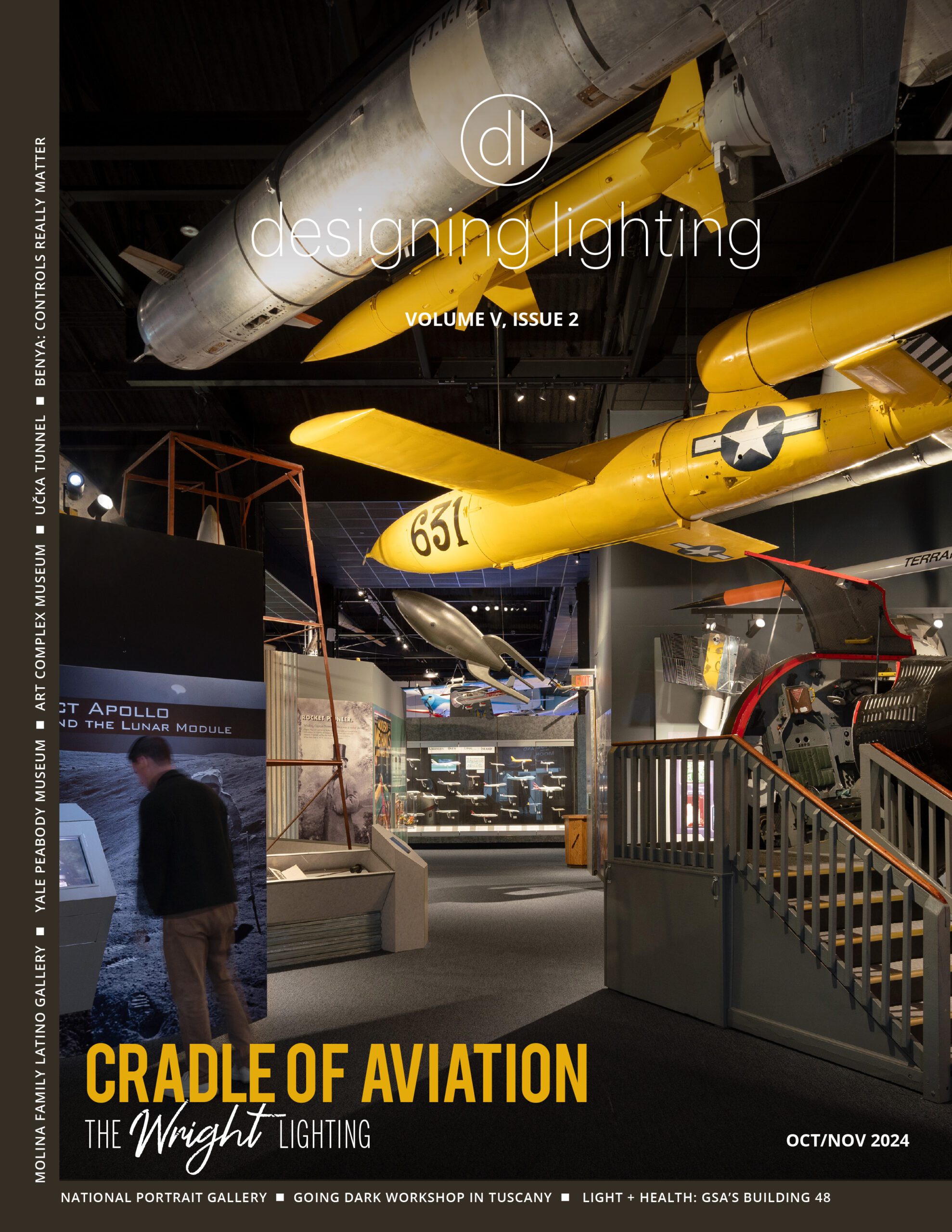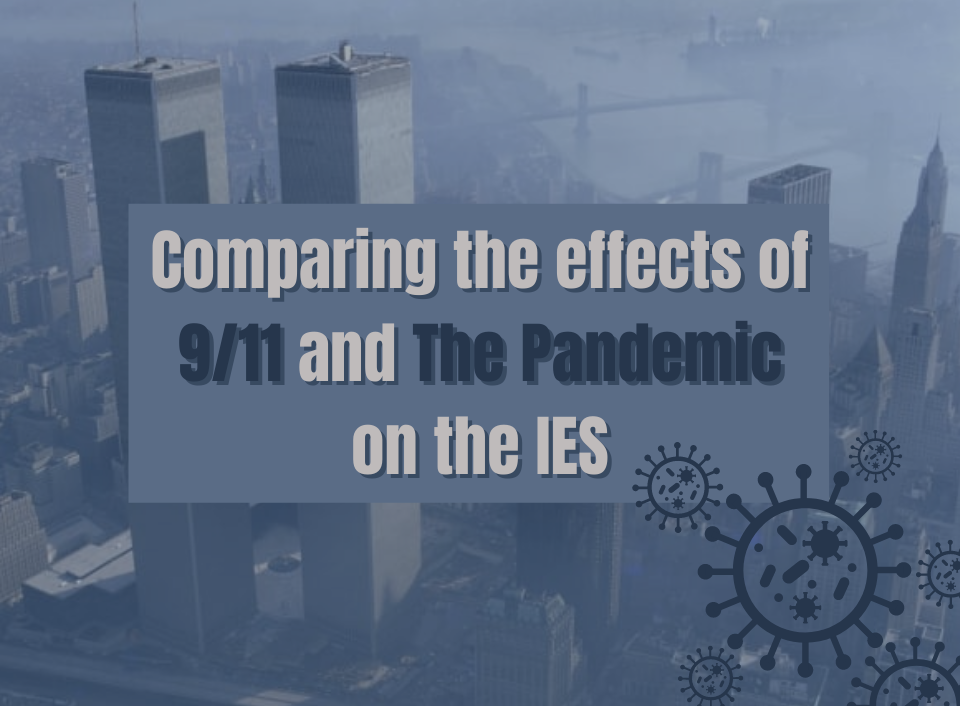The world of work is ever evolving. Normally, these changes happen so gradually that we don’t realize how dramatically our businesses and organizations have transformed. It is not until we deliberately look back that we recognize the shifts in our organizational structure, technology, and communication. However, despite the gradual nature of the changing workplace, every once in a while, our society endures a dramatic event that forces us to adapt our work practices deliberately and efficiently.
Various Illuminating Engineering Society (IES) presidents have experienced this phenomenon firsthand. Pam Horner and Jennifer Jaques both headed the IES during two of the United States’ most devastating crises in the past two decades—the 9/11 attacks and the COVID-19 pandemic, respectively—but their capacity to respond to these events differed greatly due to the nature of the events, as well as the technology available to them at the time.
A major difference was the amount of time that the presidents had to respond to the events. Jaques recalled having a couple weeks to plan for a potential transition to remote work, “On March 10th, we had been talking almost daily for the past couple of weeks [about COVID]. On March 11th, the staff did what we thought was going to be a temporary test run of working remotely, establishing everybody with equipment, communication systems, access, all that sort of stuff. Essentially, no one has come back to the office since then.”
That weekend Jaques met with legal counsel to discuss the progression of the pandemic and the directives coming from New York City leadership. Eventually, they decided that everyone was to stay remote, and for some IES staff who had always worked remotely, this transition meant little change for them. In the case of 9/11, Horner barely had time to wrap her own head around the events before addressing her concerns about IES staff. “The first plane hit at 8:46 am, and the second plane hit just after 9. What happened was not a gradual dawning,” said Horner, “It was pretty quick, where you go through your head saying, ‘The twin towers, I’ve been there. I know where they are. They’re so close to IES headquarters. What’s happening?’ It didn’t take long; it was minutes.” IES staff were sent home and told to only return once they felt safe. For some, that was a few days; for others, it was a few weeks.
“Fortunately, the IES was able to emerge from 9/11 untouched financially. The majority of IES decision-making regarded staff safety and when to return to the city.” — Pam Horner
Despite the varying timelines of the two traumatic events, one thing underscored them both: uncertainty. “An important part of this was we didn’t know if there were going to be more attacks,” said Horner, “History shows two planes hitting two towers in New York and another attack in Washington, but nobody knew this at the time. Was this going to happen again in another city? We had no idea.”
Jaques, on the other hand, was up against quickly changing conditions of COVID and its impact on business. “Every event felt like a daily conversation of option A, B, and C, but then suddenly option A would be off the table because a day had passed and a new warning or data point had come out,” she said.
For Horner and Jaques, of utmost importance throughout the aftermath of both the 9/11 attacks and the pandemic was safety. From her office in Boston, Horner stayed updated on the events in New York through phone calls with Bill Hanley, the Society’s Executive Director at the time. Hanley relayed that the IES staff were all okay but that the streets outside were filled with smoke from the collapsed building. She recalled a conversation with him, “Bill said, ‘Before I hang up, I want to tell you I finally found a great use for those ugly, old, bright yellow IES t-shirts.’ He and Rita Harrold were in the kitchen soaking them in water and ringing them out so the staff could put them over their mouths and get through the smoke.” Similarly, Jaques made staff safety her priority, especially when it came to the decision-making process for conferences. Not only did she consider the in-person aspect of the conferences, but the dangers of traveling as well. Finding a balance between staff safety and the benefits of education and social experience often came down to virtual events, a reminder of the large role that advanced technology and communication channels have played in the past year.
“With the really regular and much easier communication that we had, we were much more effective at making those really difficult decisions in a short time frame,” said Jaques, “I think we were lucky in that regard, because our communication was so much more stable and accessible.” Still, virtual communication required a learning curve for IES staff, volunteers, and members, especially those who thrived off of face-to-face interaction.
For Horner, communication was a lot less predictable. She acted as the middleman for many members of the lighting community who did not know who to call to check up on their colleagues in the city. In fact, Horner recalls a vigilant feeling of constantly looking out for a call. Because so many lighting design firms and manufacturers operate out of the New York area, lighting professionals across the country were concerned about both the mental and physical health of many of those that they knew in the city.
The lack of efficient communication weighs on Horner today still. “We had no social media. LinkedIn began in 2002, Facebook in 2004, Twitter in 2006. Some of us had cellphones, but we certainly didn’t text each other,” said Horner, “We had mail. We had email and websites and landlines. I had a past president tell me to not let 9/11 define my presidency. That’s hard not to do, because this whole issue of communication has stayed with me all these years.”
“Pandemic impacted the IES financially, as many events were made virtual.” — Jennifer Jaques
Fortunately, the IES was able to emerge from 9/11 untouched financially. The majority of IES decision-making regarded staff safety and when to return to the city, but Horner did presume that had events been slated for New York City, it may have been a different story. Jaques, on the other hand, noted that the pandemic impacted the IES financially, as many events were made virtual.
“We were still financially obligated to pay some components of those events that didn’t occur, so negotiations with vendors and hotels did see that impact,” said Jaques, “Then there was the financial impact of pivoting to a wholly virtual event. We had a basic platform but not one that was robust enough to suddenly turn on a switch and go fully virtual, plus the training involved for our staff to support that correctly.”
In particular, the cancellation of LightFair—50% of the Society’s revenue—saw a large financial effect. Jaques had previously identified lessening reliance on LightFair revenue as a goal for the Society, but when the pandemic hit, it obviously became a much higher priority. In spite of this, for both Horner and Jaques, the impact on the IES staff seemed to be one of the larger issues at hand.
“I think some who live the more typical New York life of small spaces had a bigger adjustment, because they didn’t have the flexibility to go outside as easily anymore. I also know the staff with children were suddenly home with them 24/7 for several weeks. Some of them were literally counting down the days of that,” said Jaques, “There was this big shift of trying to still be effective, but also keeping in mind all of the changes to your use of time or your mental strain or the exhaustion of being a young parent. All of that is compressed into a tiny apartment.”
9/11 also had ramifications for the IES staff’s mental health. Horner recalled one woman in particular whose train terminus was located at the Twin Towers. Her train came in just as the first plane hit, and she ran all the way from the platform to the IES office. Horner had been on the phone with Bill Hanley after the woman arrived at the office, and she was clearly distraught. “Later, she did decide to resign, not just from the IES but also New York City, which was a decision that a lot of people had to make because of this trauma,” said Horner.
Both former presidents had their leadership tested during their terms, but neither woman let these events stop them from pursuing their goals for the year. Horner had several that she saw through, including initiating the planning for the Society’s centennial, prioritizing education, and re-examining the journal and its online presence. On the other hand, Jaques began the year with the primary goals of building the sense of community within the IES and working on global outreach.
“Oddly enough, in ways the pandemic has accelerated that. Increased communication and transparency were actually achieved. Maybe not in the positive sense I was hoping—I didn’t want a pandemic to be that driver— but it sort of was,” said Jaques, “When the term started, I knew the strategic plan was going to be a huge part of my efforts. Incorporating transparency and communication, as well as a sense of community, into the strategic plan became another way to execute upon those.” The society’s virtual SALC event illustrated this. “We had almost 100 EPs [emerging professionals] participate when we have never had a strong EP cadre at SALC.”
If anything, the IES’ response to the 9/11 attacks of 2001 showcases its resilience and flexibility, something that is being harnessed to handle the pandemic today. “I think it has showed a lot of gaps to improve upon and be aware of, just like 9/11 showed for Pam,” said Jaques, “Given the way the pandemic played out, I think we have to continue to be more aggressive in strengthening our resilience for our members and our volunteers, but also for our systems and our staff.”
Hurricane Sandy
Similar to the 9/11 attacks and the pandemic, Hurricane Sandy had a large impact on the IES. The tropical storm landed in New Jersey in 2012, closing bridges and causing buildings to catch fire. In New York City, the basement of the IES headquarters was flooded and, consequently, phone lines were destroyed. For two months, the staff was unable to work from the office.
The impact of Hurricane Sandy even exists today. “One positive thing was that there was an increased interest at the time in the concept of resilience,” said Pam Horner. In fact, in the December following the storm, a special initiative for rebuilding and resiliency was set up by the New York City mayor. IES followed that lead creating the IES Resilience Committee which is still active today.
Fortunately, former Executive Director Bill Hanley, former Director of Technology Rita Harrold, and Manager of Standards Development Pat McGillicuddy took care of everything. Chip Israel, the President of the IES at the time, said, “Those three people really kept the Society functioning during that time. Pat would solve one problem, only to see a new problem develop and then she would solve that problem as well.”
This article originally appeared in the February issue of designing lighting




